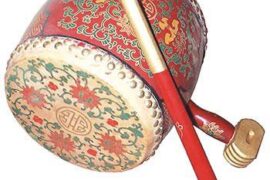Unleash Your Child’s Inner Artist with Puppy Cartoon Drawing!
Hello Creative Families!
Are you looking for an adorable and fun activity to share with your kiddos? Look no further, because puppy cartoon drawing is the perfect blend of cute, creative, and educational fun! Whether you’re a parent, grandparent, or guardian, this guide will help you create memorable moments with your little ones while they learn to draw their favorite furry friends. ???
Why Puppy Cartoon Drawing Is PAW-some for Kids!
Drawing is not only a delightful way to spend quality time with your children, but it also has a host of developmental benefits. It enhances fine motor skills, boosts self-confidence, and fosters creative thinking. Plus, who can resist a sweet cartoon puppy? It’s a win-win!
What You’ll Need
- Sketchbook or sheets of drawing paper
- Pencils (HB or 2B)
- Eraser
- Colored pencils or markers
- A comfortable and well-lit workspace
- An abundance of smiles and giggles
Simple Steps to Start Drawing
Before diving into the puppy cartoon drawing, it’s essential to start with the basics. Here are some simple steps to get your little artist’s pencil moving:
- Warm-Up Sketches: Begin with simple shapes like circles, ovals, and lines to loosen up those drawing muscles. It’s a fun way to warm up and get ready for the main event!
- Understand Proportions: Show how different shapes can come together to form a puppy’s body. A big circle for the head and a larger oval for the body are great starting points.
- Basic Outline: Guide your child in sketching a rough outline using light pencil strokes. Remind them that mistakes are okay and easily fixed with an eraser!
- Facial Features: Draw two dots for eyes, a little triangle for the nose, and a wavy line for the mouth to give your puppy cartoon character and charm.
- Add Personality: Encourage your child to add unique touches like spots, a collar, or a silly expression to make their drawing one-of-a-kind.
- Coloring Fun: After the sketch is complete, bring it to life with color! Let your child’s imagination run wild with a rainbow of possibilities.
Step-by-Step Puppy Cartoon Drawing
Now that we’ve covered the essentials, let’s dive into drawing a charming cartoon puppy step by step. Keep in mind to let your young artists express themselves; there’s no ‘right’ way to draw, so let’s have fun with it!
Step 1: Draw the Head
Let’s start with the head!
Your child’s strokes will soon turn into a wondrous collection of shapes brimming with life and character. By following these steps together, you’ll not only be drawing—you’ll be building incredible memories and nurturing a love for art. So let’s grab those pencils and let the artistic adventure begin!
Stay tuned for more giggles and wagging tails as we continue this delightful journey into the world of puppy cartoon drawing. Happy drawing, everyone!

5 Tips for Parents Preparing for a Puppy Cartoon Drawing Session
Tip 1: Choose The Right Drawing Supplies
Having the proper drawing tools is key to a frustration-free drawing experience. Opt for kid-friendly pencils, which are thicker and easier to grip. Buy quality erasers that won’t smudge, and ensure you have a good variety of colored pencils or markers. These items don’t have to be expensive; affordability and comfort take precedence for budding artists!
Tip 2: Set Up a Comfortable Workspace
Find a bright and cheerful spot at home that’s dedicated to your drawing adventure. A flat table with plenty of space, good lighting, and a comfortable chair can make all the difference. Ensure the area is free from distractions so that your child can focus on their art. The right environment will set the mood for creativity and fun!
Tip 3: Practice Patience and Encouragement
It’s important to foster a calming atmosphere where mistakes are seen as part of the learning process. Encourage your child to take their time, and reassure them that every stroke contributes to their artistic growth. Celebrate their effort and praise their progress, not just the end result – this will build their confidence and enthusiasm for drawing.
Tip 4: Use Age-Appropriate Techniques
Introduce drawing techniques that align with your child’s ability. For younger children, keep directions simple: “Let’s draw a big circle for the puppy’s head!” As they grow older and more adept, you can introduce more complex shapes and details. This ensures that they are challenged just enough to stay engaged and proud of their creations.
Tip 5: Keep The Experience Fun and Educational
Turn drawing sessions into joyful learning experiences. Explain a bit about puppy anatomy as you draw different parts: “Did you know a puppy’s nose is super sensitive?” Incorporate stories or play drawing games to keep the session lively. Remember, the goal is to enjoy the process and spark imagination!
Before you start sketching with your kids, remember these handy tips to ensure a positive and creative drawing session. Gather your supplies, set up a cozy nook, practice patience, adjust techniques as needed, and mix fun with learning for a truly PAW-some drawing adventure!
Now let’s get those tails wagging on paper! Keep following along for more detailed steps on creating a magical puppy cartoon drawing that will bring joyful barks to your family’s art time!
Stay tuned for more giggles and wagging tails as we continue this delightful journey into the world of puppy cartoon drawing. Happy drawing, everyone!
See more great Things to Do with Kids in New Zealand here. For more information see here
Disclaimer
The articles available via our website provide general information only and we strongly urge readers to exercise caution and conduct their own thorough research and fact-checking. The information presented should not be taken as absolute truth, and, to the maximum extent permitted by law, we will not be held liable for any inaccuracies or errors in the content. It is essential for individuals to independently verify and validate the information before making any decisions or taking any actions based on the articles.




